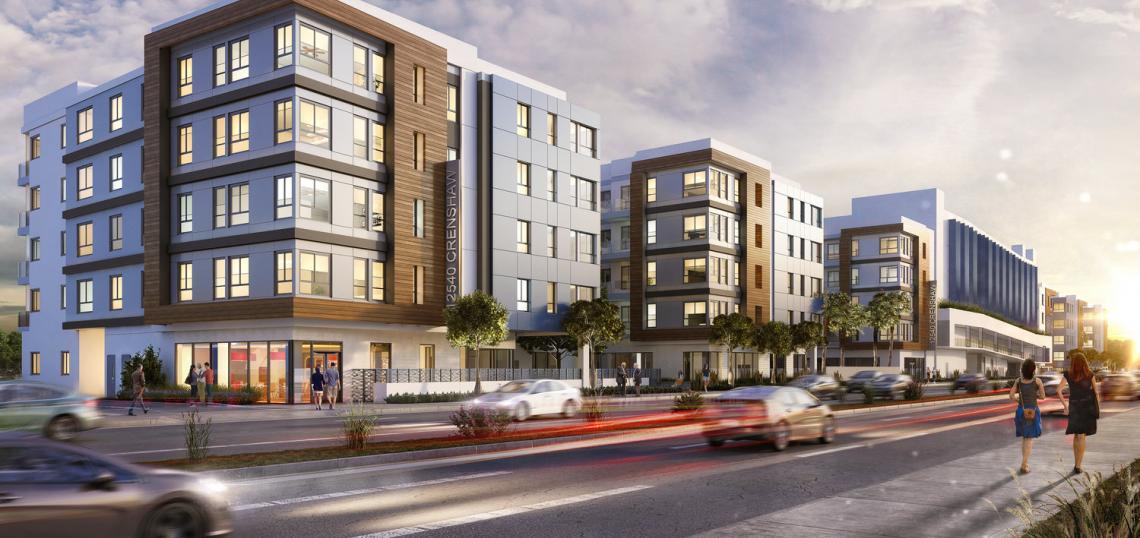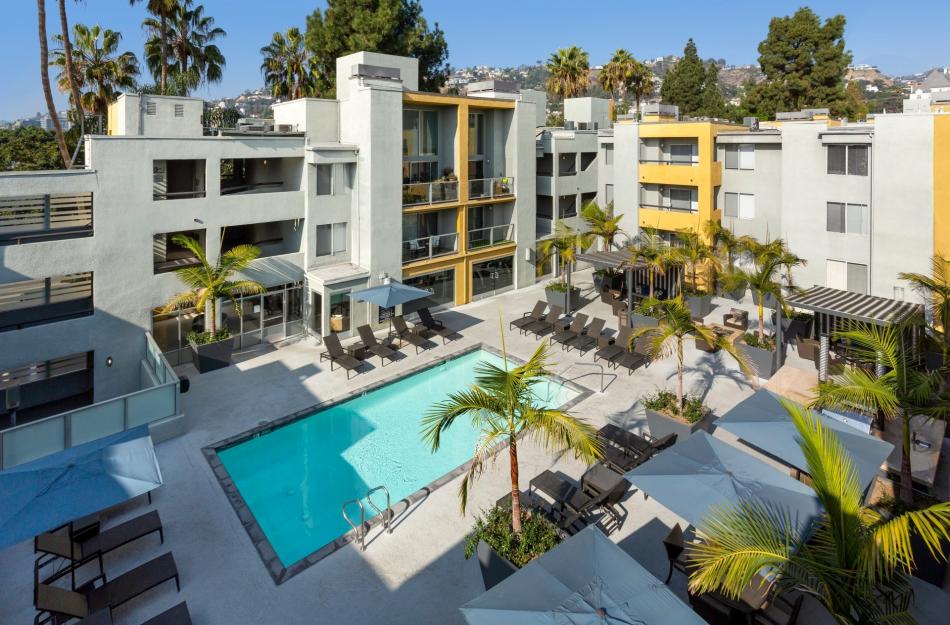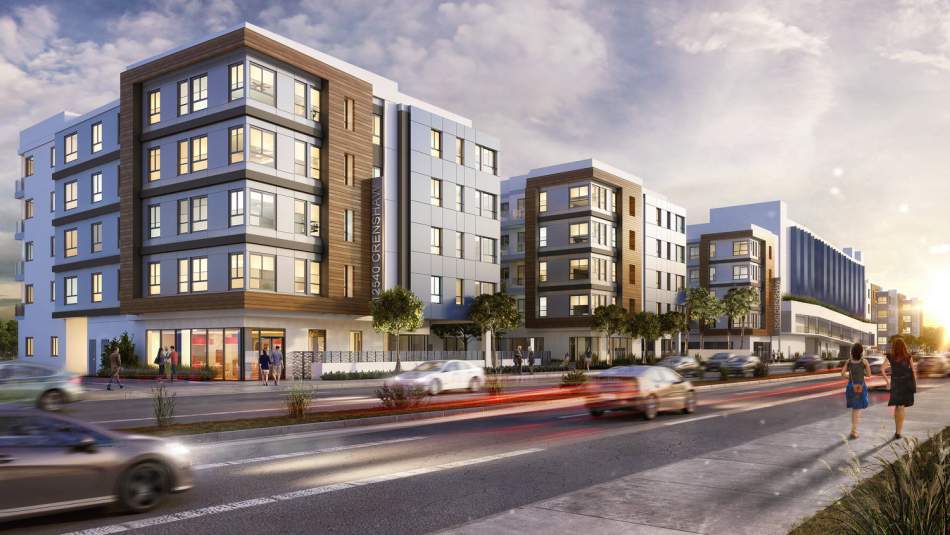Months after announcing plans to spend $2 billion to purchase Los Angeles area apartment buildings to repurpose them as "middle-income" housing, developers Standard Communities and Faring are starting to follow through.
The joint venture recently announced the acquisition of The Crescent at West Hollywood through the California Statewide Communities Development Authority's (CSCDA) Workforce Housing Program. The 130-unit apartment complex at 1274 N. Crescent Heights Boulevard is the sixth property Standard Communities and Faring have acquired in tandem, resulting in a portfolio of more than 1,300 residential units.
"We're excited to partner with the City of West Hollywood to help bring this workforce housing project to life," said Chris Cruz of Standard Communities in a statement. "With approximately $6 million in planned capital expenditures for renovations, this property is well positioned to address the City's 'missing middle' housing needs for decades to come."
The West Hollywood purchase comes just weeks after the joint venture announced the acquisition of the Millennium South Bay apartments located 12530 Crenshaw Boulevard in Hawthorne.
The L.A. Business Journal reports that the $140-million transaction will convert 230 units as long-term workforce housing.
“This public-private partnership to create workforce housing will ensure that middle-income families and essential workers can afford to live in a high-quality transit-oriented and mixed-use property, close to their work and many neighborhood amenities,” said Cruz in a statement to the Business Journal. “Two-thirds of the units are reserved to those making below $82,000 a year, with one-third reserved for those making at or below $66,000 a year.”
Under the Workforce Housing Program, Standard Communities and Faring acquire market-rate apartment buildings are purchased using tax-exempt bonds that are later purchased by investors, and repaid through rental interest over time. The bond financing comes with the requirement that the units at the buildings be reserved for rent by "middle-income" households which refers to households earning between 80 and 120 percent of the area median income.









